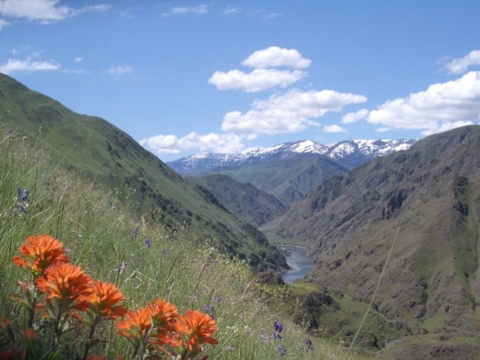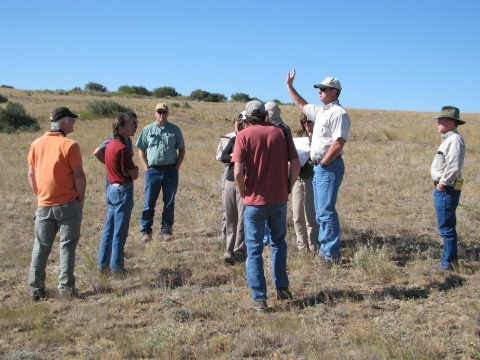About Us
The Idaho Fish and Wildlife Office (IFWO) is part of the U.S. Fish & Wildlife Service's Ecological Services program. This program works closely with partners to conserve the nation's fish, wildlife, plants and habitat by providing national leadership for the conservation of species and their habitats under the authorities of the Endangered Species Act, the Fish and Wildlife Coordination Act, The Migratory Bird Treaty Act and more.
The IFWO is part of a network of field stations located throughout the nation that works to conserve fish and aquatic resources. Over 300 biologists from the Arctic Circle to the Florida Keys work to recover endangered and threatened species, monitor and control invasive species invasive species
An invasive species is any plant or animal that has spread or been introduced into a new area where they are, or could, cause harm to the environment, economy, or human, animal, or plant health. Their unwelcome presence can destroy ecosystems and cost millions of dollars.
Learn more about invasive species , evaluate native fish stocks and their habitats, and work with our partners to deliver conservation throughout the United States.
Working with Others
We know that good relationships and collaboration lead to better conservation results. That’s why we put them at the forefront of our strategy to find smart solutions that support both conservation and local land use needs. Our large jurisdiction gives us the opportunity to listen to and work alongside a variety of people, including landowners, Tribes, state and Federal agencies and stakeholders. By using the best available science and ensuring all voices are included in our decision-making process, we can find balance between the needs of people and wildlife.
Our Jurisdiction
The Service's Idaho Fish and Wildlife Office focuses on plant and wildlife conservation in 44 counties across the state of Idaho. We monitor the status of more than 16 listed species from tiny aquatic snails to large furry mammals like the grizzly bear. Our work covers a wide range of habitats, including snow-covered mountains, rolling foothills, sagebrush sagebrush
The western United States’ sagebrush country encompasses over 175 million acres of public and private lands. The sagebrush landscape provides many benefits to our rural economies and communities, and it serves as crucial habitat for a diversity of wildlife, including the iconic greater sage-grouse and over 350 other species.
Learn more about sagebrush deserts, and beautiful Idaho rivers.
.
Our Workforce
The U.S. Fish and Wildlife Service is working to build the next generation of conservation leaders. We are committed to building and maintaining a diverse and inclusive workforce that reflects the communities we live in, is accessible to all and free of employment discrimination.
Our Mission
Working with others, to conserve, protect and enhance fish, wildlife, and plants and their habitats for the continuing benefit of the American people.




